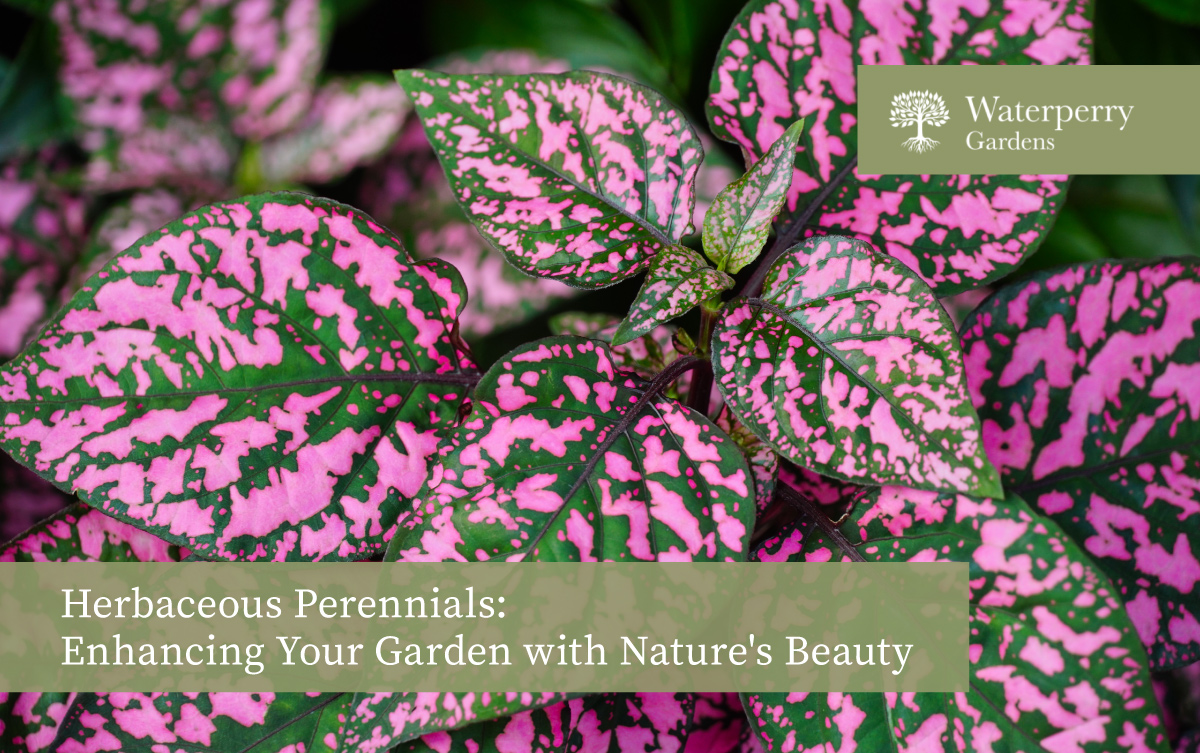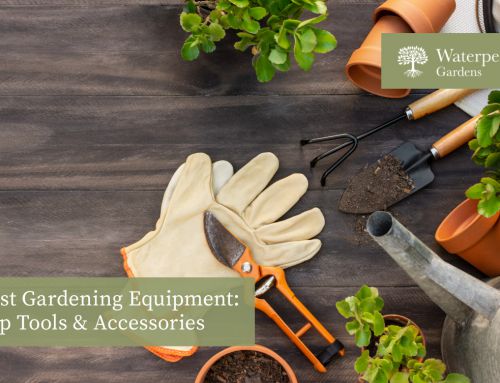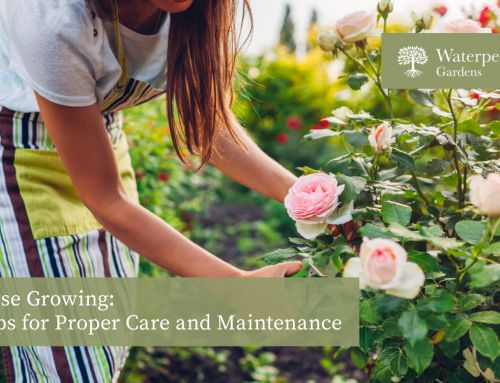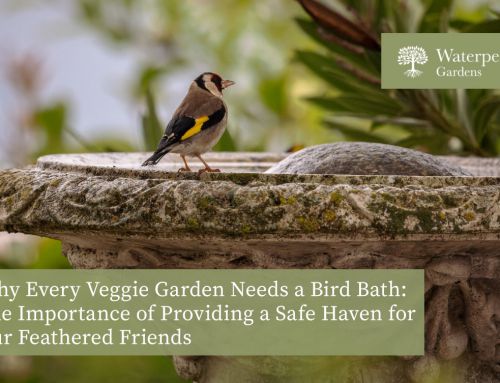Herbaceous Perennials: Enhancing Your Garden with Nature’s Beauty
Welcome to this comprehensive guide on herbaceous perennials, focusing on five stunning varieties: Dryopteris affinis The King, Echinops ritro Veichs Blue, Eryngium × zabelii ‘Big Blue’, Geranium Azure Rush, and Geranium pratense ‘Black Beauty’. This article will delve into the characteristics, cultivation tips, and care instructions for these beautiful plants. Whether you’re a seasoned gardener or a beginner, this guide will provide valuable insights and expert advice on creating a thriving herbaceous perennial garden. So let’s dive in and explore the world of these beautiful plants!
Herbaceous Perennials: Overview and Benefits
Before we delve into the specifics of each herbaceous perennial, let’s understand what makes them such a valuable addition to any garden. Herbaceous perennials live for over two years, with their above-ground parts dying back in winter and regrowing from the base each spring. These plants offer several benefits, such as:
- Longevity: Herbaceous perennials can provide beauty and joy for many years, making them a worthwhile investment for any gardener.
- Low Maintenance: Once established, herbaceous perennials generally require less maintenance than annual plants. They come back year after year, reducing the need for replanting.
- Versatility: With various colours, shapes, and sizes, herbaceous perennials offer endless possibilities for creating stunning garden displays.
Now, let’s explore each herbaceous perennial’s characteristics and care requirements in detail.
Dryopteris affinis The King
Overview
Dryopteris affinis The King is a majestic fern that adds a touch of elegance to any garden. Known for its impressive height and robustness, this fern thrives in partial shade and well-draining soil. The fronds of Dryopteris affinis The King exhibit a rich green colour and provide a beautiful backdrop to other plants.
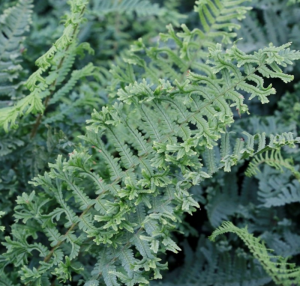
Cultivation Tips
To cultivate Dryopteris affinis The King successfully, follow these guidelines:
- Location: Choose a partially shaded area in your garden to ensure the fern receives the right amount of sunlight.
- Soil: Plant the fern in moist, well-draining soil rich in organic matter.
- Watering: Keep the soil moist but avoid overwatering, as excessive moisture can lead to root rot.
- Mulching: Apply a layer of organic mulch around the base of the plant to help retain moisture and suppress weed growth.
- Dividing: Divide the plant every few years in early spring to rejuvenate its growth.
Care Instructions
Dryopteris affinis The King requires minimal maintenance, but here are some care instructions to keep it thriving:
- Pruning: Remove dead or damaged fronds regularly to maintain the plant’s appearance.
- Fertilisation: Apply a balanced slow-release fertiliser in early spring to provide essential nutrients for healthy growth.
- Pest and Disease Control: Watch out for common pests like slugs and snails. If necessary, use organic pest control methods to protect your fern.
Echinops ritro Veichs Blue
Overview
Echinops ritro Veichs Blue is a striking herbaceous perennial known for its spherical blue flower heads. This plant, called Globe Thistle, adds texture and colour to any garden. Echinops ritro Veichs Blue creates a stunning focal point with its spiky foliage and eye-catching flowers.
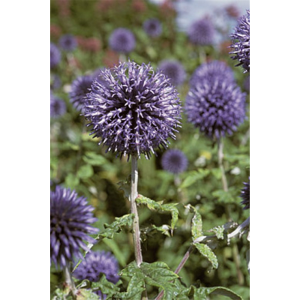
Cultivation Tips
To cultivate Echinops ritro Veichs Blue successfully, follow these guidelines:
- Sunlight: Choose a sunny location in your garden, as this perennial thrives in full sun.
- Soil: Ensure the soil is well-draining and moderately fertile. Sandy or loamy soil types are ideal for Echinops ritro Veichs Blue.
- Watering: Provide regular water during the plant’s establishment phase. Once established, it is relatively drought-tolerant.
- Division: Divide the plant every three to four years in early spring to maintain vigour.
Care Instructions
Echinops ritro Veichs Blue is generally low-maintenance, but here are some care instructions to help it thrive:
- Deadheading: Remove spent flower heads to encourage continuous blooming and prevent self-seeding.
- Staking: Provide support, such as stakes or plant rings, to prevent the tall flower stems from flopping over.
- Mulching: Apply a layer of organic mulch around the plant to conserve moisture and suppress weeds.
Eryngium × zabelii ‘Big Blue’
Overview
Eryngium × zabelii ‘Big Blue’ is a captivating herbaceous perennial commonly known as Sea Holly. With its spiky, silver-blue foliage and cone-shaped flower heads surrounded by bracts, this plant adds a touch of drama to any garden. Eryngium × zabelii ‘Big Blue’ attracts pollinators and creates a striking contrast when planted alongside other perennials.
Cultivation Tips
To cultivate Eryngium × zabelii ‘Big Blue’ successfully, follow these guidelines:
- Sunlight: Plant this perennial in a location with total sun exposure, as it thrives in bright light conditions.
- Soil: Use well-draining soil with good fertility. Sandy or loamy soil types suit Eryngium × zabelii ‘Big Blue’.
- Watering: Provide regular water during the plant’s establishment phase. Once established, it is relatively drought-tolerant.
- Division: Divide the plant every two to three years in early spring to maintain vigour.
Care Instructions
To ensure the health and vitality of Eryngium × zabelii ‘Big Blue’, follow these care instructions:
- Deadheading: Remove spent flower heads to promote continuous blooming and maintain the plant’s appearance.
- Cutting Back: After the first frost, cut the plant back to a few inches above the ground. This helps protect the crown during winter.
- Pest Control: Monitor for pests such as aphids or caterpillars. If needed, use organic pest control methods to address infestations.
Geranium Azure Rush
Overview
Geranium Azure Rush is a stunning herbaceous perennial known for its delicate blue flowers and aromatic foliage. With its compact habit and extended bloom time, this Geranium variety is perfect for borders, rock gardens, or container planting. Geranium Azure Rush attracts pollinators and adds colour to any landscape.
Cultivation Tips
To cultivate Geranium Azure Rush successfully, follow these guidelines:
- Sunlight: Plant this perennial in a location with partial shade to total sun exposure, as it adapts well to various light conditions.
- Soil: Use well-draining soil with a slightly acidic to neutral pH. Amending the soil with organic matter can improve its fertility.
- Watering: Provide regular water during the plant’s establishment phase. Once established, it is relatively drought-tolerant.
- Division: Divide the plant every three to four years in early spring to maintain vigour.
Care Instructions
Geranium Azure Rush is relatively low-maintenance, but here are some care instructions to ensure its optimal growth:
- Deadheading: Remove spent flowers regularly to encourage continuous blooming and maintain the plant’s appearance.
- Pruning: Trim back the plant lightly after the first bloom to promote reblooming and maintain a compact shape.
- Mulching: Apply a layer of organic mulch around the base of the plant to conserve moisture and suppress weed growth.
Geranium pratense ‘Black Beauty
Overview
Geranium pratense ‘Black Beauty’ is a striking herbaceous perennial with deeply cut, dark purple foliage and vibrant blue flowers. This variety of Geranium adds drama and contrast to any garden or landscape. Geranium pratense ‘Black Beauty’ is known for its resilience and ability to tolerate various growing conditions.
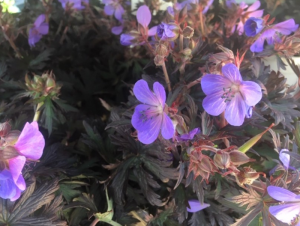
Cultivation Tips
To cultivate Geranium pratense ‘Black Beauty’ successfully, follow these guidelines:
- Sunlight: Plant this perennial in a location with full sun to partial shade. It adapts well to different light conditions.
- Soil: Use well-draining soil with a slightly acidic to neutral pH. Amending the soil with organic matter can improve fertility.
- Watering: Provide regular water during the plant’s establishment phase. Once established, it is relatively drought-tolerant.
- Division: Divide the plant every three to four years in early spring to rejuvenate its growth.
Care Instructions
Geranium pratense ‘Black Beauty’ requires minimal maintenance, but here are some care instructions to keep it thriving:
- Deadheading: Remove spent flowers regularly to promote continuous blooming and maintain the plant’s appearance.
- Pruning: Cut the plant after the first bloom to encourage reblooming and support a compact habit.
- Mulching: Apply a layer of organic mulch around the base of the plant to retain moisture and suppress weed growth.
br>
FAQs:
Q: How can I ensure the best growth for herbaceous perennials?
A: To ensure optimal growth, provide the appropriate amount of sunlight, well-draining soil, regular watering, and occasional division to rejuvenate the plants.
Q: Can I grow herbaceous perennials in containers?
A: Yes, many herbaceous perennials can be grown in containers. Ensure the containers have drainage holes and use well-draining potting soil. Monitor watering needs carefully, as containers can dry out more quickly than garden beds.
Q: How often should I fertilise herbaceous perennials?
A: It is generally recommended to fertilise herbaceous perennials once in early spring using a balanced slow-release fertiliser. Avoid over-fertilisation, which can lead to excessive foliage growth with fewer flowers.
Q: Are herbaceous perennials deer-resistant?
A: Some herbaceous perennials have a level of deer resistance, but it can vary depending on the specific plant species. It is advisable to research the deer resistance of each plant before adding it to your garden.
Q: Can I divide herbaceous perennials at any time of the year?
A: It is best to divide herbaceous perennials in early spring before new growth emerges. This allows the plants to recover quickly and establish themselves before summer.
Q: How can I protect herbaceous perennials during winter?
A: Providing a layer of mulch around the base of the plants before winter can help insulate the soil and protect the plant’s roots. Additionally, some herbaceous perennials benefit from cutting back their foliage after the first frost to reduce winter damage.
Herbaceous perennials, such as Dryopteris affinis The King, Echinops ritro Veichs Blue, Eryngium × zabelii ‘Big Blue’, Geranium Azure Rush, and Geranium pratense ‘Black Beauty’, are an excellent choice for adding long-lasting beauty and charm to any garden. By following the cultivation tips and care instructions in this guide, you can enjoy these stunning plants’ vibrant colours, unique textures, and low-maintenance nature. Whether you’re a fan of ferns, thistles, sea holly, or geraniums, incorporating these herbaceous perennials into your garden will create a visually appealing and thriving landscape. Happy gardening!


